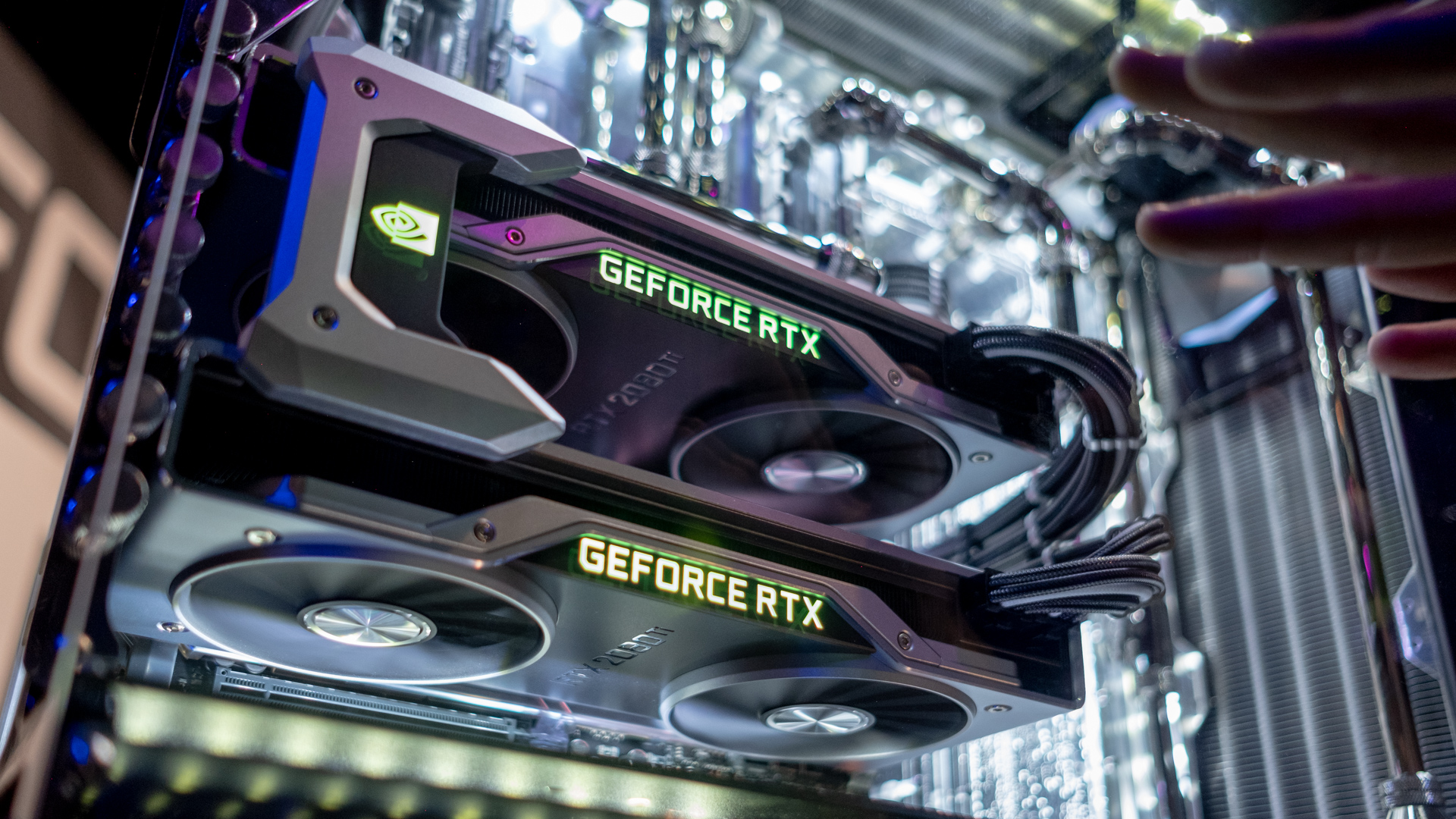Nvidia’s next Tesla GPUs could be 75% faster – good news for future GeForce cards
Big Red 200 supercomputer upgrade hints at equally big things for consumer GPUs

Big Red 200, a new supercomputer at Indiana University, is now up and running, and later this year will be upgraded to make use of Nvidia’s next-gen GPUs, which will potentially be up to 75% faster than current Tesla graphics solutions.
This is according to a report from The Next Platform, which spoke to Brad Wheeler, VP for IT and CIO at Indiana University, airing the claim that Nvidia’s next-gen Tesla graphics solutions – which will be deployed as a ‘phase two’ upgrade for Big Red 200 in the summer – will be around 70% to 75% faster than current offerings.
- Nvidia is bringing ray tracing to more classic PC titles
- Find the best Nvidia GPU for you
- Check out all the best PC games
That’s a huge leap in performance, of course, and while you might think that it’s not particularly relevant to the average PC user – with these being heavyweight GPUs in a massive supercomputer – remember that the technology Nvidia uses here could trickle down to its consumer GeForce offerings.
And an (up to) 75% performance increase in Tesla lends more credence to the (admittedly fairly wild) previous rumor that has been floated, which contends that Nvidia’s next-gen GeForce graphics cards could benefit from a 50% performance uplift (albeit this could, potentially, only pertain to ray tracing scenarios – although this is all just up-in-the-air theorizing, of course).
Speculation has it that Nvidia’s next-gen Tesla GPUs might be unveiled at the firm’s GPU Technology Conference in March (this isn’t the first time we’ve heard that Ampere graphics cards will be revealed at GTC in San Jose – although other corners of the rumor mill seem to believe that this could mean a consumer GeForce card, rather than a data center offering).
An unveiling at GTC in March might be ahead of a summer launch for the new heavyweight cards, which would line up with the proposed Big Red 200 upgrade time frame as mentioned.
As ever, we have to treat any speculation with a great deal of caution, but nonetheless, this represents a potentially exciting glimpse of how powerful Nvidia’s next-gen graphics tech could be in terms of heavyweight computing – hinting at similar things for consumer GPUs.
Sign up for breaking news, reviews, opinion, top tech deals, and more.
Epyc beast
Big Red 200 is a Cray Shasta supercomputer, and it launched with 672 dual-socket nodes carrying AMD’s Epyc 7742 (2nd-gen server) 64-core processors. In the phase two upgrade, further Epyc chips will be added to the machine, along with the aforementioned next-gen Tesla GPUs.
The University decided to take this two-stage deployment approach when it discovered that if it waited a bit longer, it could benefit from Nvidia’s next-gen products, rather than going with Nvidia V100 GPUs as was originally planned.
With those V100 cards, Big Red 200 would have been capable of a peak performance level in the order of 5.9 petaflops, but using the newer GPUs, the supercomputer should instead see performance up to 8 petaflops.
- These are the best graphics cards of 2020
Via Videocardz
Darren is a freelancer writing news and features for TechRadar (and occasionally T3) across a broad range of computing topics including CPUs, GPUs, various other hardware, VPNs, antivirus and more. He has written about tech for the best part of three decades, and writes books in his spare time (his debut novel - 'I Know What You Did Last Supper' - was published by Hachette UK in 2013).